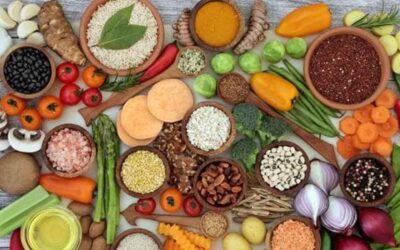savoy cabbage
When we eat a vegetable, we tend to think that it is the only one available. We are not aware of the fact that every vegetable has various kinds and varieties. These might not be common, might be wild, might be too common, or can a bit exotic. But if we take interest in these things, we shall know that some varieties of common vegetables are highly nutritious and beneficial to our health. They provide something which even normal veggies don’t. Savoy cabbage is one such fine example.
Overview

The savoy cabbage is scientifically known as Brassica oleracea. It comes from the Brassica oleracea family. The cabbage is a vegetable that people have during winters. It is one of several cabbage varieties that we consume today. Originating from England, the savoy is also a part of the ancient culture of the Netherlands. It was until the 18th century that it came into existence in Germany. People used to call it ‘Savoyer Kohl’ during that time. The name comes from a specific region of France called the Savoy Region. The leaves are green and a specific texture is there on them. The crunchy leaves are crinkled and tender. Many cultivators deal with savoy cabbage and its production in different parts of the US.
How is it different from other cabbages
While every cabbage is somewhat similar in texture, shape and nutritional value, there are minor differences. One of the major differences in the color of the variations. Cabbages come in different colors, red being the most attractive one. The most common one comes in green color. When you think of cabbage, green is the first thing that comes to our mind. The green cabbage has round and large leaves. The color could be green to light green to paler green. It has a peppery flavor which slight hints of sweetness. The flavor mellows when cooked and remain intact when you eat it raw. Leaves of green cabbage can be easily sliced and you can have it raw. You can toss it into soups or used it in stir-fries. It holds up quite nicely in thick wedges. It is very effective when you grill it or roast it making the edges smoky. Some of the common recipes include cabbage with bacon, hot and sour mushroom soup with cabbage, rice and cabbage soup, cabbage gratin with cream, bacon and mushroom and cabbage pasta with potatoes.
The second most common variety is the red cabbage. It looks similar to the green one, except the purple or reddish color. The structure of the red cabbage is similar to the green one. They both are identical in flavor as well. Hence, you can use red cabbage as you would use the green one. Many people use the red one to brighten up the looks and appeal of any salad or other dish. It is good as a final garnish due to its attractive hue. Some fine recipes to look out for include cabbage and mustard vinaigrette roasts, cider vinegar and apple with red cabbage, Jalapeno slaw and cabbage, cabbage slaw and lemon with hazelnuts, quick cabbage slaw with fish tacos, etc.
The third type of cabbage that can bags attention is the Napa cabbage. Very popular as chinese cabbage, this is not so similar to one we were talking about earlier. The cabbage has a differnet appearance. It isa large and oblong, not round in shape. The filly pale yellow-green leaves give it a unique characteristic. When it comes to flavor, you can find notes of sweetness in more quantity than other cabbages. The leaves are the most tender in this one. If you are looking to add something soft and mild to the preparation, Naba cabbage can be a good option. As the main part of Chinese cuisine, it is a good option to add to dumblings or stir-fries. These are also great when you use them as salads and slaws. The raw form is a pleasure to eat. You can try recipes with Napa cabbage such as tofu salad with napa, napa dumplings, deep-dish cabbage with Farro casserole, kimchi fried rice, napa cabbage and kale coleslaw with ginger cream dressing, etc.
And then comes our savoy cabbage. It has the same shape as the red cabbage. The best part of the savoy cabbage is the most influencing deep-green leaves. Yes, the leaves will attract you from a far distance and you might not resist taking few balls at home. The flavor is also slightly on the better side. The hints of mildness in the leaves complement the astonishing earthen flavor. The leaves are very crispy which makes them a good addition to raw meals. You can also have it by using the methods of roasting, sauteing and cooking. Some of the coolest recipes to try to include deep-dish cabbage with faro casserole, weeknight cabbage rolls, stir-fried cabbage with peanut sauce, bacon and roasted cabbage, etc.
Nutritional value of savoy cabbage
Just like any green leafy vegetables, the nutritions are present in plenty in savoy cabbage. But we won’t just tell you the details in brief. We shall explain to you every nutritional fact about his vegetable. Let us begin.
We will take a cup of fresh savoy leaves as a standard measure to dictate the nutritional value.
One cup of savoy cabbage contains ample nutrients to keep you healthy and active during the day. A cup will provide you with 19 calories which means that you can keep the calorie count low by having one or two cups of the vegetable. This makes it a good addition to a low-calorie diet or a low-calorie breakfast.
A cup will give you 0.1g of fat. This is as surprising as it can get. Don’t worry about that extra fat when you have this magical vegetable in your diet. Moving one, the same cup has nil saturated fat and trans fat. Savoy cabbage is a no-pressure diet for your cholesterol. It contains 0% in one cup. So don’t worry about elevated blood pressure meters when you are consuming this green leafy vegetable.
Savoy cup will give you 19.8mg of sodium equaling to 1% you need in a day. It also has 161mg potassium means 5% required by our body daily. Many people worry about sugars and carbohydrates when eating vegetables with a sweet taste. Worry not as the Savoy has got you covered. It has the exact amount you need. It contains 4.1g of carbohydrate which is 1 % of the total daily value you need.
The cup will have 2.1 g of dietary fiber which is the good fiber in our diet. This is 8% of the total we need in a day. Fiber is good for aiding our digestion and helping our digestive tract stay healthy. The savoy cup will also have 1.8 g of safe and healthy natural sugar keeping your glycemic index in control.
Next is the list of vitamins and minerals. These are present in plenty and you can most of the esssnetial ones by eating these on a regular manner. It contains 14% vitamin A and 36% vitamin C. The calcium and iron content is 2% each value of what we need daily. It has 3% thiamin and 1% riboflavin. Vitamin B6 is also present and a cup will give you 7% of the total daily content you need.
Other nutrients include 1% niacin, 5% magnesium, 3% phosphorus, 1% zinc, 2% copper and 1% pantothenic acid.
Additional nutritional facts
When we check the carbohydrate quality score of savoy, we will find amazing results. We know that carbohydrates are made up of three main ingredients- starch, fiber and sugar. The data shows that the score of savoy is 50 out of 100 which is an excellent one, making it rich quality food.
The vegetable is complete in protein content. The completeness is based on the overall proportion of the food along with its amino-acid content. The savoy has enough of to essential amino acids our body requires. However, these might not be as complete as some other green vegetables. The content include leucine, lysine, histidine, valine, isoleucine, met+Cys and Phe+Tyr.
When we eat a complete diet, we always look to enhance the protein-energy ratio of our body. This can be an effective strategy in increasing your diet while losing weight. The protein energy diet of savoy is not too bright and nor too dull. It is in an intermediate category.
Next is the energy density value. If you lower the energy density of your food, you can help in the prevention of obesity. You can also aid in the treatment of obesity-related diseases such as blood sugar. Savoy can really help you in focusing on your calorie intake. The vegetable has a 0.3 energy density value making it one of the lowest energy density food.
Conclusion
If we talk on an overall basis, savoy is a highly nutritious food. It has enough percentage of daily recommendations of nutrients in a single serving. Additionally, it also has complimentary nutrient boosters. These are the products that help our body in consuming nutrients in a better way. Concluding, let’s take a good look at some of the best uses of savoy cabbage.
- Savoy cabbage is a natural ingredient that is used to treat a variety of life-threatening diseases. Scientists believe that the savoy can help in making the treatment more effective in cases of diseases related to lung and cancer. When we boil cabbage, it becomes a fine anti-inflammatory agent. Having boiled cabbage can help cure digestive system diseases. Cabbage on swollen feet also one of the benefits . It also helps in dysentery and ascites which we often link with cirrhosis.
- Did you know that cabbage is one of the top ten healthy foods in today’s world? No doubt that it is a great addition to your weight-loss diets. The antioxidant properties of cabbage do wonders in weight loss. Its high fiber content also helps in extracting our toxins from our body. The trace elements content further aids in calorie burning.
- The ample amount of vitamin C in cabbage helps protect our skin from various problems. It also aids in quick wound healing. Savoy also assists in the protection of cells from premature aging issues. This happens as free radicals are removed by the antioxidants in the cabbage. Vitamin C also helps increase the strength of our immunity.
- One can treat various dyspeptic disorders by using headed savoy cabbage. These diseases are generally related to heartburn, hiatal hernia, etc. Provide Cabbage for pain relief in conditions such as duodenal ulcers, gastric ulcers, or gastritis. Savoy is also good for regulating various types of digestive tract functions in our body.
- Cabbage is a good source of calcium. This means when you consume savoy on regular basis, you are providing good health to your bones, muscles and joints. It also promotes fine muscle contraction and arterial blood pressure regulation. The wound healing and signal transmission of the nervous system also improves.
- The risk of various heart diseases can be reduced with the help of the potassium content of the savoy cabbage.
- Many people also report a decrease in the onset of cells related diseases. Anemia can be easily cured using the regular diet of savoy cabbage. It helps in the formation of red blood cells in our body.
- Savoy cabbage is also effective as a topical agent. It is very much effective for healing wounds. Symptoms of headaches, painful joints, arthritis, oestoproises can be prevented.
- Having savoy cabbage means you are having a low-calorie yet nutrient-rich diet. This will help you with your weight loss program. You can have enough nutrients by consuming fewer calories. One can have savoy in the form of soups or salads. You can have it during breakfast, lunch or dinner or in-between as a small healthy meal.



